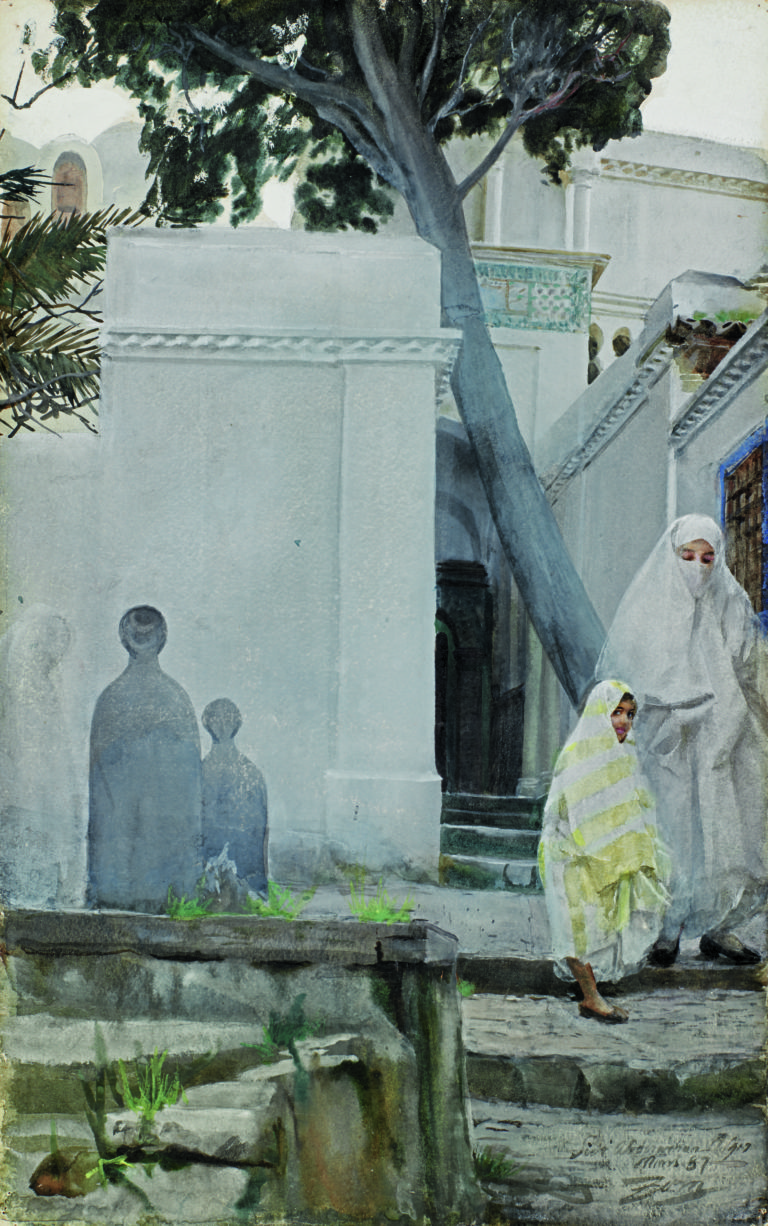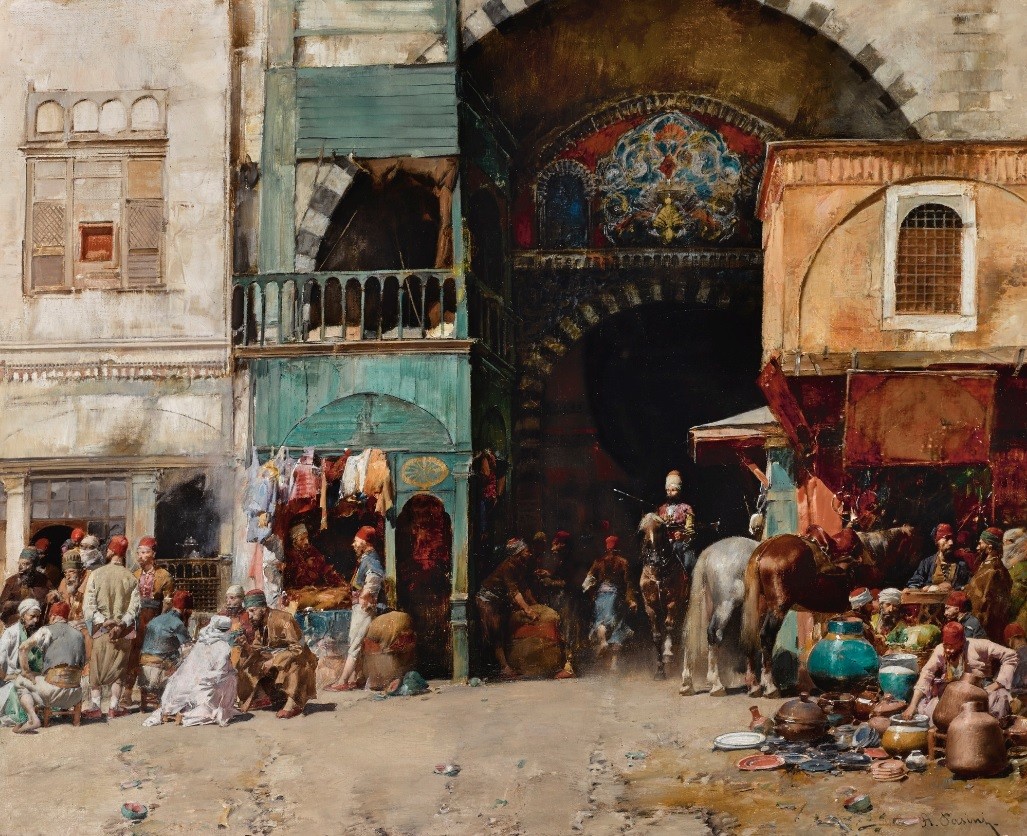Sotheby’s says its having its largest Orientalist sale since the category was launched in 2012 as a stand-alone sale. On April 24 in London, 60 lots of paintings and sculpture representing the landscapes, people, and customs of North Africa, Egypt, the Levant, Arabia, and the Ottoman world during the 19th and early 20th centuries. Buyers in this category are now often residents of the Gulf and North Africa looking for European depictions of their native locales.
Here is a selection of the sales top lots:

Anders Zorn (Swedish, 1860 – 1920)
Women outside the Sidi Abderrahman Mosque, Algiers, 1887, watercolour and
gouache on paper
Estimate £300,000-500,000 / $420,000-700,000
This rediscovered work, executed in March 1887, belongs to the small series of watercolours Zorn made in Algiers, during an extensive journey with his wife Emma to Constantinople, Greece, Italy, and North Africa. The artist depicts the Sidi Abderrahman Mosque in Algiers, Algeria, painted five years earlier, in 1882, by Pierre-Auguste Renoir. This work shows Zorn’s mastery and virtuosity in the medium of watercolour which first brought him fame.

Edwin Lord Weeks (American, 1849 – 1903)
Rabat (The Red Gate), 1879, oil on canvas
Estimate £200,000-300,000 / $280,000-420,000
This monumental view of the inner gate of the Kasbah of Oudaïas in Rabat was painted during Weeks’ third trip to Morocco with his wife Frances Rollins Hale, taking in Tangier, Tetuan, and Rabat. In Rabat, Weeks became fascinated by the kasbah, a fortified citadel built in the twelfth century during the time of the Almohad Caliphate (AD 1121- 1269). The gate was a spectacular example of highly ornamented Almohad architecture, characterised by a horse-shoe arch and intertwined arabesques which conveyed elegance and grandeur. Morocco’s imposing city gates formed the backdrop to several major French Orientalist works by Eugène Delacroix and Benjamin-Constant.

Jean-Léon Gérôme (French, 1824 – 1904)
A Sultan at Prayer, 1887, oil on canvas
Estimate £200,000-300,000 / $280,000-420,000
A respectful and moving observation of a man of high rank worshipping God, this recently rediscovered work stands out not just by virtue of its exceptional detail and palette, but on account of the frontal view, rare in the artist’s work in
which worshippers are predominantly seen from behind or in profile. Gérôme’s fascination with Muslim prayer began from the moment he set foot in Constantinople in 1852, and Egypt in 1856, and would become a central tenet in his oeuvre. Here, a single figure stands silhouetted against a darkened yet architecturally distinctive backdrop, his silken robes crafted from the most vibrant confectionary of colours and his fur gown rendered in photographic detail. His only company is a seated man, possibly a dervish, also in prayer, and an attendant drinking from an urn. The colour palette of blue and turquoise may also well have been an inspiration to the Ottoman Orientalist painter Osman Hamdy Bey, who met Gérôme in Paris in the 1860s.

Theodoros Ralli (Greek, 1852-1909)
Stringing Pearls, 1882, oil on canvas
Estimate £80,000-120,000 / $112,000-168,000
Stringing Pearls is a rediscovery in Ralli’s oeuvre, and perfectly captures the artist’s exceptional skill at depicting intimate scenes of daily life in Egypt. Seated on an ornamented wooden bench adorned with elegant silk cushions, a Nubian man dressed in yellow silk carefully strings white teardrop pearls into a necklace. Picking them one by one from a small ceramic bowl, he appears fully concentrated on his task, unaware that he has dropped two on the floor. Pearl cultivation and the pearl trade were integral to the Middle East region’s economy before the discovery of oil and gas, and the advent of industrially produced pearls. Fashioned into necklaces and bracelets, or to embellish jewellery, natural pearls supplied from the region were prized by jewellers all around Europe.

























